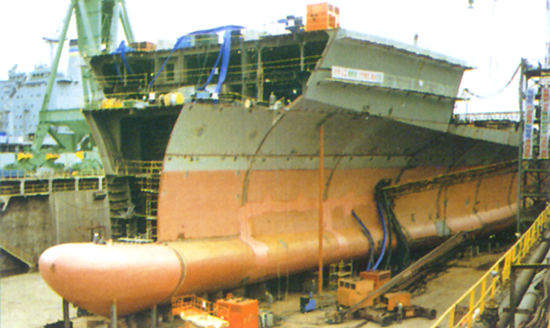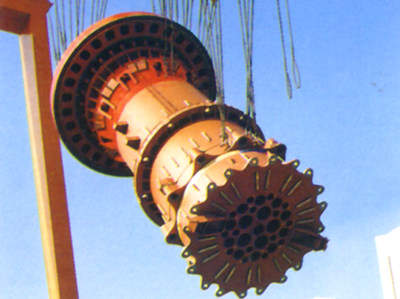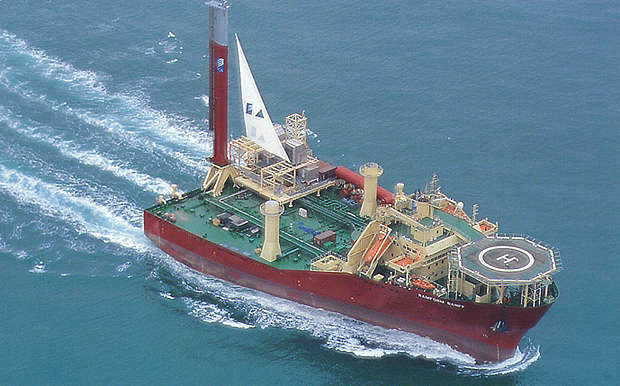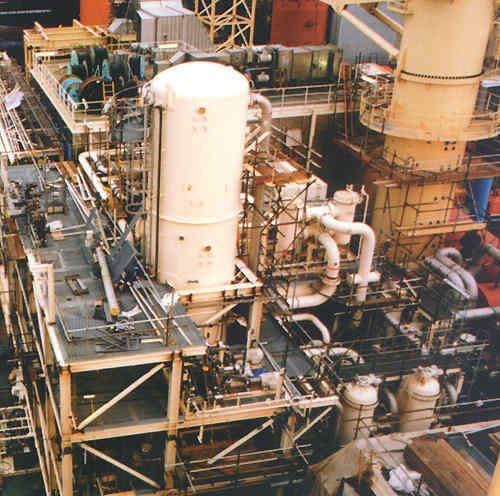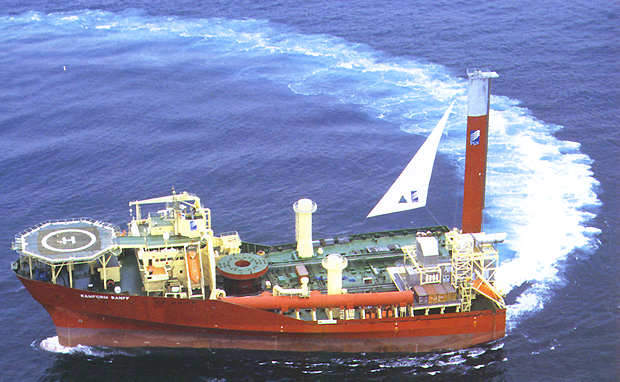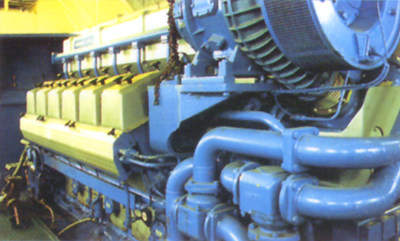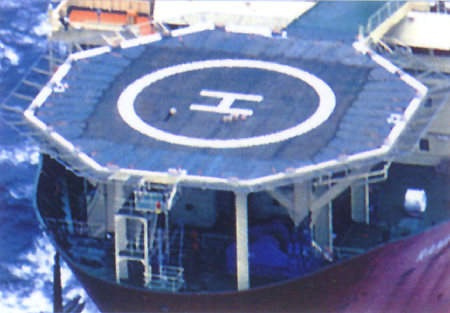The Ramform Banff is a Floating Production, Storage and Offtake (FPSO) system purpose-designed to produce from Conoco’s 60 million barrel and 39 billion ft³ gas Banff field in the North Sea, 200km east of Aberdeen. At the same time, it provides flexibility to reconfigure processing packages, either to fit the changing needs of the reservoir, or to manage a new reservoir with different requirements.
The vessel hull was fabricated at the Hyundai Mipo yard in Ulsan, South Korea and was the first use of the Ramform wedge-shaped hull design as a floating production system.
DESIGN
The hull, which has a characteristic delta shape, provides both a large load bearing capacity (up to 16,000t) and a stable work platform. This delta-shaped hull form is more fuel efficient at speeds of about 15 knots than similar specification conventional vessels.
The double hull design has a storage capacity of 120,000 (onboard) plus 500,000 barrels to be provided by a distant moored Floating Storage Unit (FSU) and later a shuttle tanker. The hull is 395ft long by 175ft wide. The vessel weighs around 10,000t, excluding topsides module and helideck. The load bearing capacity is 16,000t. The octagonal steel helicopter deck measures 22.2m by 22.2m and is suitable for EH101 type helicopters.
CARGO SYSTEMS
The Banff topsides contain a 3,500t process facility (capable of producing 60,000 barrels of oil per day and 90,000 barrels of fluid per day) which was installed in the Aker McNulty yard at South Shields, UK. The topsides module also contains equipment for gas dehydration, compression and export, as well as water injection, produced water treatment and disposal systems. Also included are metering, stabilised crude export, utility systems, process/well control and shutdown systems.
The fully weather-vaning turret mooring can accommodate up to 15 risers, although Banff will use only seven. The toroidal swivel can be customised for liquids and gases to meet requirements for varying sized product Iines, flow rates and pressures, and can be pumped or extracted simultaneously. Electrical power and control line sliprings can be included in the swivel stack, in addition to pneumatic control rings. A key feature of the swivel stack is its self-alignment capability, which significantly reduces seal wear. Eight anchors provide the turret mooring system for the vessel.
PROPULSION
The vessel is powered by two 3,530kW fresh water-cooled diesel generator sets. The propulsion package comprises three azimuthing thrusters, three 2,800kW Lipstronic units aft, delivering a thrust of around 70t compared with some 50t for similar conventional vessels. The vessel is fitted with a heading control thruster system. In operation, it will be turret moored and hooked up to the field’s subsea cluster via flexible flowlines and a dynamic riser system.
An electrical power generation plant was installed comprising of 11kV diesel generator sets and a GT35 gas turbine, suitable for unattended service. This power plant serves all equipment such as thrusters, deck cranes, winches, Iightings etc.
AUTOMATION AND CONTROL
The Ramform Banff has a power management system that controls synchronising, closing generator circuit breaker systems and load sharing between generators.
The GMDSS radio equipment for sea areas A1, A2 and A3 is installed in a dedicated console in the radio room. Aerials for all communications, navigational and broadcast equipment minimise cross talk, cross modulation and interference between equipment, such as the telephone system paging and public address system.
The turret positioning system includes vessel sensor equipment, including two gyro compasses, two vertical reference sensors and two wind sensors; a surface position reference system (Artemis, Gyro, two current meters); and a surface reference system.

